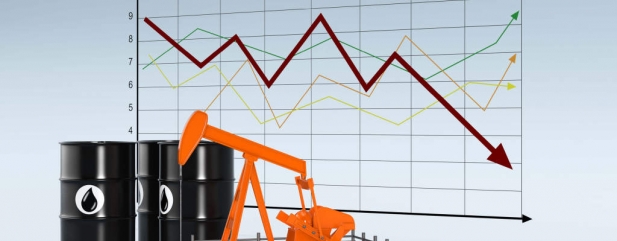Archived article
Please note that tax, investment, pension and ISA rules can change and the information and any views contained in this article may now be inaccurate.
Why is the oil price collapsing?

Black Friday is a term typically associated with the retail sector, but it could have summed up the mood of boardrooms in oil and gas firms across the globe on 23 November when oil hit its lowest level in 12 months after a significant intraday crash in prices.
Even after crawling back just above $60 per barrel at the time of writing, the global Brent Crude index is still down around 30% from the year-to-date highs above $85 seen in early October.
A month ago all the talk was of the impact on global output from US sanctions on major producer Iran. Everyone is now pointing to a big surplus of supply and US president Donald Trump
is calling for lower prices.
IS THE FALL IN THE OIL PRICE DUE TO A SUPPLY GLUT?
The perceived risk of oversupply in the market reflects the fact the US included more waivers in its sanctions than expected. This meant Iranian production and exports remained robust at a time when Saudi Arabia had been ramping up its own output to compensate for the anticipated shortfall.
WHAT IS HAPPENING IN THE US?
The US yardstick West Texas Intermediate (WTI) remains at a big discount to Brent, at barely above $50 per barrel, reflecting the strong domestic oil production in the US, although the spread between the two has come down a little amid the recent volatility.
The key infrastructure hub in Cushing, Oklahoma saw stocks fall by 116,000 barrels in the week to 21 November, the first decline in nine weeks.
WHAT ELSE IS CONTRIBUTING TO THE FALL?
Oil, like other commodities, is driven by supply and demand factors, yet financial speculation also plays a role.
AJ Bell investment director Russ Mould comments: ‘Fundamentals such as supply and demand will ultimately prevail – and the OPEC cartel clearly has an influence on supply since it produces around a third of the globe’s daily oil requirements – but they can be drowned out in the short term by speculation, as traders (using leverage, or borrowed cash, to try and maximise returns) move in and out of positions via the futures markets.’
Mould notes that since the number of short or ‘sell’ positions fell to a record low this summer, they have since started to tick up, while at the same time buyers of oil (those with long positions) have started to lock in profit. This exacerbated the weakness in the oil price.
Traders were likely reacting to the wider market sell-off of so-called ‘risk’ assets, of which oil is one, and the perceived risk to demand from global tensions over trade.
IS THIS IS A REPEAT OF THE 2014 CRASH?
The oil analyst team at Canadian bank BMO don’t think so. They comment: ‘The collapse in crude oil prices over the 2014-2016 and 1998-1999 periods were driven largely by excess supply as OPEC misjudged market conditions. This translated to a significant build in global crude oil and product inventories that weighed on crude oil and petroleum product prices.
‘We do not see a replay of this (situation) in 2019 assuming OPEC reduces production levels in recognition of higher production from Iran. Global inventory levels are in line with historical averages and should not prove problematic given our demand assumptions,’ adds BMO.
CAN THE IMMINENT OPEC MEETING MAKE ANY DIFFERENCE?
Producers’ cartel OPEC is widely expected to take some action to curb output at its meeting on 6 December. In the current climate this is likely to do little more than stabilise oil prices. If OPEC fails to act, then another big fall cannot be ruled out.
HOW WILL THIS IMPACT THE OIL AND GAS INDUSTRY?
Oil majors like BP (BP.) and Royal Dutch Shell (RDSB) responded in the wake of the 2014 oil price crash by streamlining their operations. This should alleviate concerns over their capacity to maintain generous dividends, a key selling point of their shares.
Fourth quarter performance may reflect the weakening oil price and could lead to wider scrutiny over industry spending plans for 2019. It could therefore be bad news for the oil services space, which had just started to reap the benefits of oil’s recovery.
BMO believes any reduction in spend may have longer-term positive implications for the oil price with already too few projects sanctioned to deliver the required growth in supply between 2020 and 2025.
Important information:
These articles are provided by Shares magazine which is published by AJ Bell Media, a part of AJ Bell. Shares is not written by AJ Bell.
Shares is provided for your general information and use and is not a personal recommendation to invest. It is not intended to be relied upon by you in making or not making any investment decisions. The investments referred to in these articles will not be suitable for all investors. If in doubt please seek appropriate independent financial advice.
Investors acting on the information in these articles do so at their own risk and AJ Bell Media and its staff do not accept liability for losses suffered by investors as a result of their investment decisions.

 magazine
magazine










